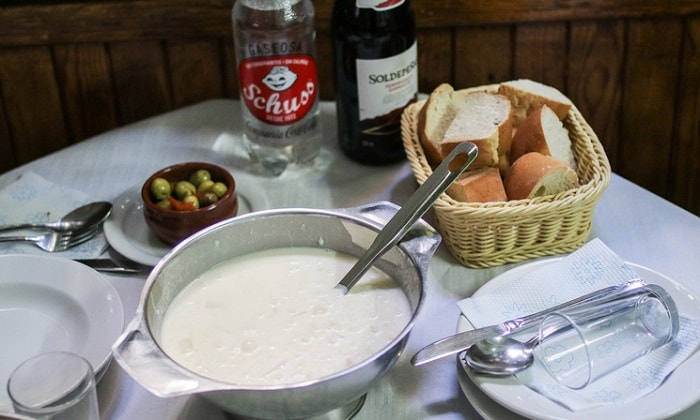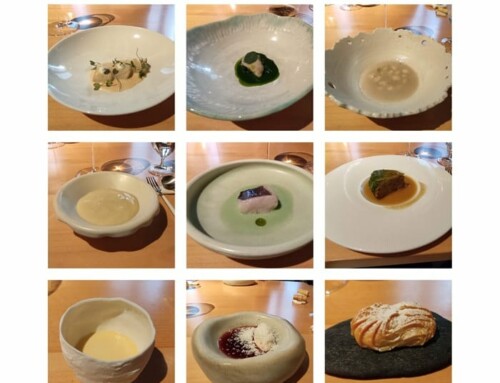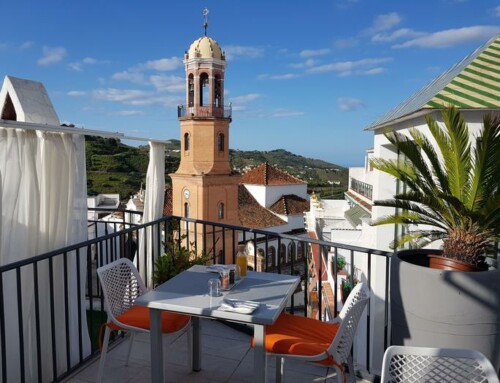The city of Ronda is like a dream come true. It looks like a place from another time. It is a city that allows us to discover all the civilizations that passed by. Or a city that makes us learn about myths and legends from bandits travelling all over the mountain range.
Ronda’s dream starts in its Puente Nuevo Bridge, commonly known here as “El Tajo”. It is a breathtaking structure which makes the viewer dizzy both because of its height and its beauty. This bridge links the old part of Ronda with the new one. It is the perfect place to understand how interesting a day around this lovely city can be.
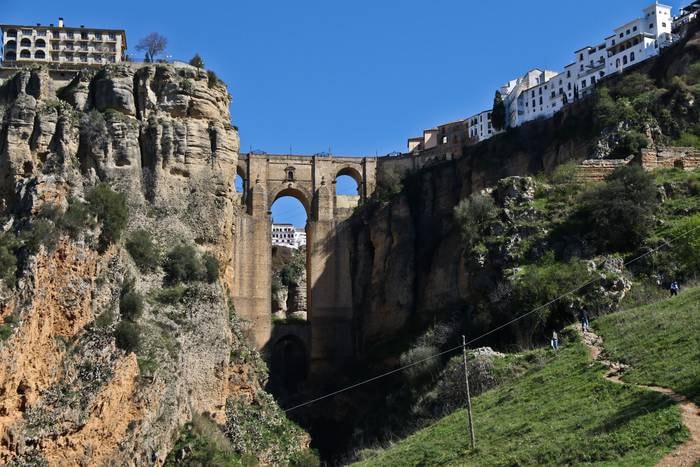
Puente Nuevo (New Bridge)
An essential cultural visit to Ronda
Dawn breaks and one of the best moments to enjoy the city begins: its breakfasts. Ronda offers numerous possibilities for this in both the old and the new city. In almost any cafeteria or bar you can enjoy good toast or molletes de Antequera with zurrapa de lomo (local bread buns with rustic pork pâté), tomato, good olive oil and ham, excellent fresh local cheeses and of course churros or tejeringos, as they are called here.
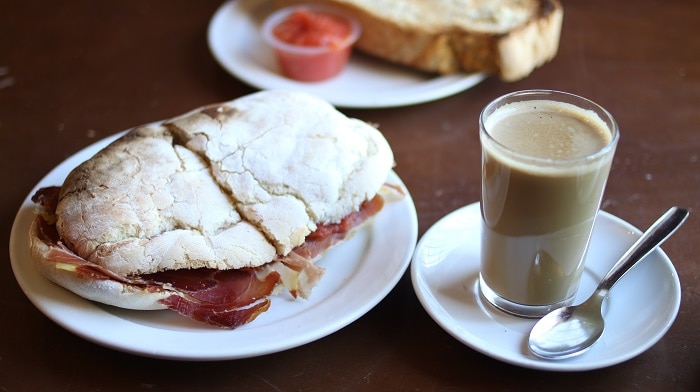
Breakfast at La Rondeña
We especially like Café de Agata. It is a young business located in the new town where the coffee is delicious, as well as the toasts that you can combine with cold meats made in the region. Although the house specialty is the spectacular fruit and vegetable smoothies: pure energy to start the day.
The Bullring of the Real Maestranza de Caballería de Ronda, is the perfect place to start our visit to the city. It was inaugurated in 1785, being one of the oldest in the country.
It’s a true piece of Ronda history that dazzled characters such as Orson Welles and Ernest Hemingway, whose busts are located right next to the bullfighting ring.
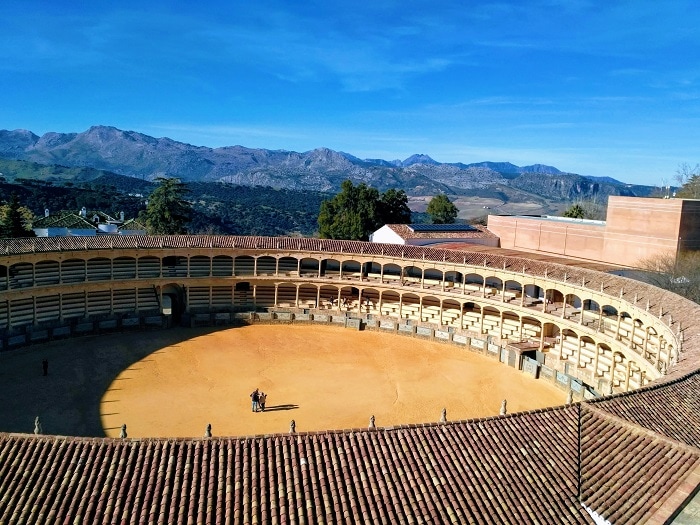
Bullring. Picture taken from Hotel Catalonia
- General admission: 8 €. With audio guide 9,50 €.
- Hours: 10:00 to 18:00 (in summer the visiting hours are extended).
It is worth a detour a few minutes to the right to reach the Paseo de los Ingleses with excellent viewpoints and the Alameda del Tajo, one of the parks most visited by the locals.
We go back the way we came to go to the Puente Nuevo (New Bridge), going through the Parador de Ronda which has spectacular views of the Tajo and also to the whole valley below the city. We can return here after lunch to have a coffee.
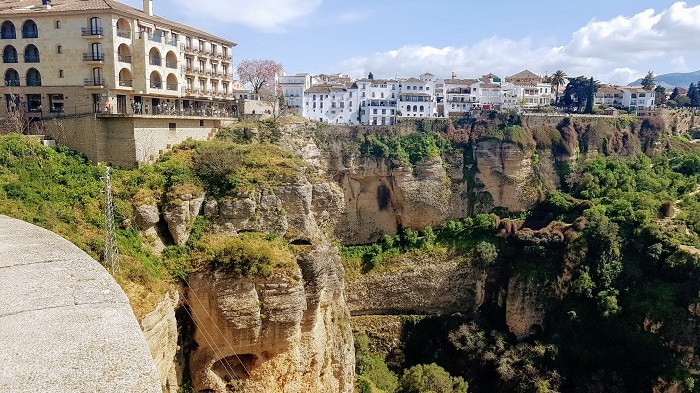
Parador de Ronda on the edge of El Tajo
At the Parador, the road turns sharply to the left, to come face to face with the monumental New Bridge, undoubtedly the symbol of Ronda.
This impressive work of engineering is the result of the second attempt to save the Guadalevín River Gorge and connect both parts of the city (the first attempt ended with the collapse of the bridge a few years after its construction). Almost 100 m high, it is built in stone imitating the Roman technique with shored semicircular arches. The current bridge was inaugurated in 1793, after 42 years of construction.
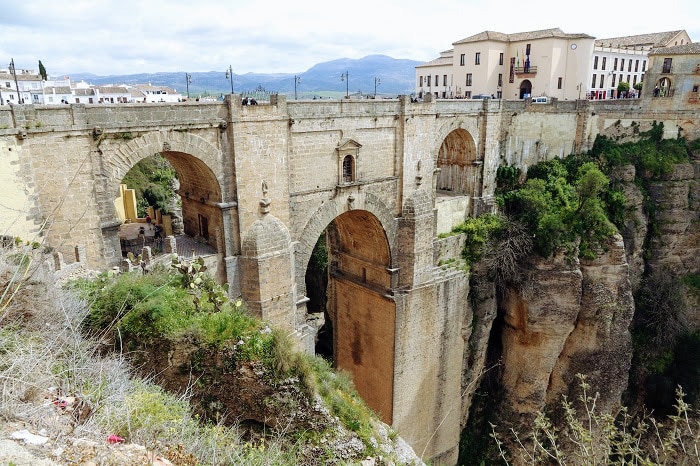
Puente Nuevo. Picture taken from El Parador
From there, it is worth getting lost in the alleys of the old town. Narrow streets of whitewashed houses through which you can visit the City Museum, the Minaret of San Sebastian or reach the Duquesa de Parcent square.
This is a particularly interesting place: there is the beautiful building of the Ronda Town Hall, but also the Santa Maria La Mayor Parish, a magnificent temple built over 200 years, where different historical architectural styles are mixed in its construction: Renaissance, Gothic and Baroque. In addition, this church still preserves parts of the Mosque on which it was built.
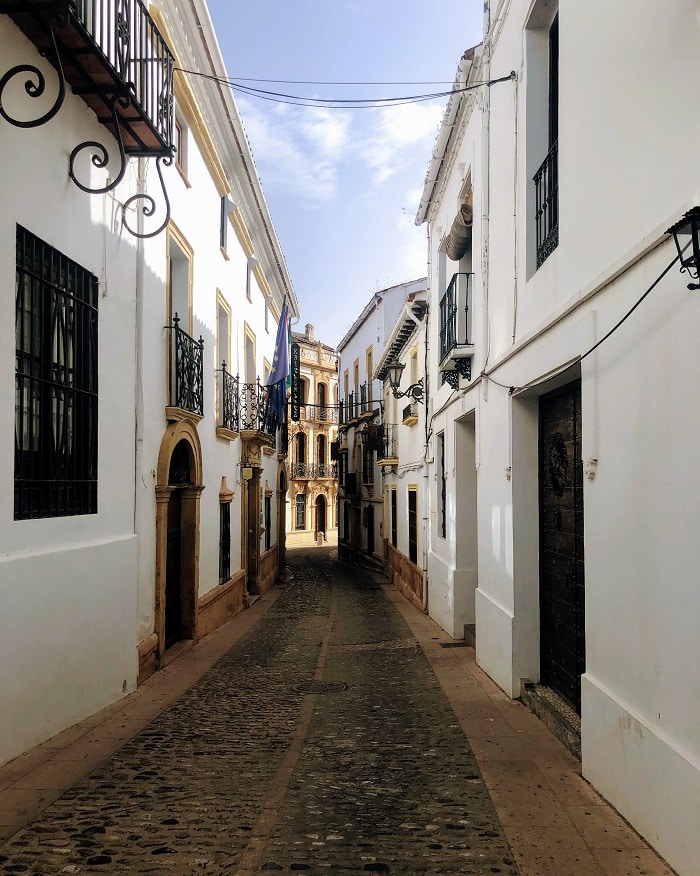
Ronda historical centre streets
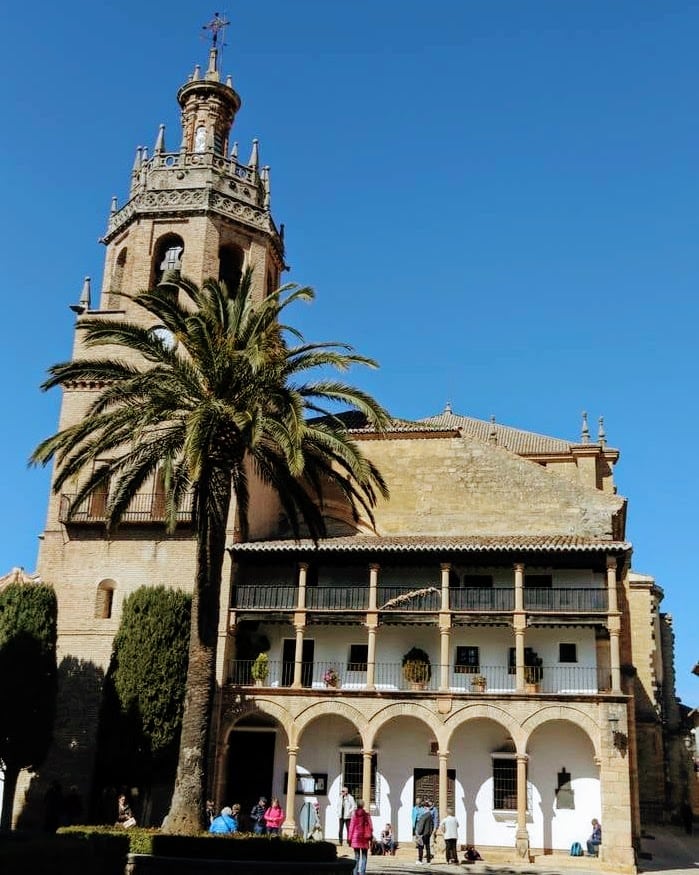
Santa Maria La Mayor Church
A short walk from there, down Armiñán street, we arrive at the Espíritu Santo Church and the Almocábar Gate and Aall, whre you can see how difficult it was for the Christian troops to conquer the city at the end of the 15th century. Crossing the gate we have the Plaza Ruedo Alameda, which in summer and anytime the weather is good, it is full of local people having a drink on the terraces of the many restaurants and bars there.
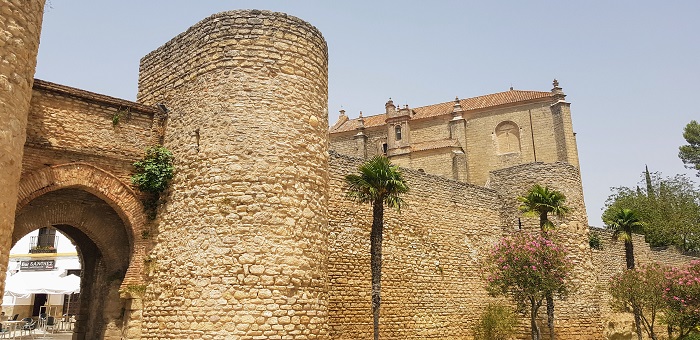
Almocábar Wall and Espíritu Santo Church behind
We continue our route returning to Armiñán street and turning slightly to the right where we can walk along the beautiful Arab Walls to the Cijara Gate and further on to the Carlos V Gate.
From here we can choose to go to three places: on the left we have the House and Gardens of the Moorish King, which is a National Monument and Asset of Cultural Interest, and where we can visit the old Water Mine from the Muslim period; on the right, passing the Arab Bridge on the side, we can go down to the Arab Baths which are really beautiful and one of the best preserved in Spain; going straight on, we will cross the Old Bridge with the Gardens of La Mina on the left and the Fountain of the Eight Spouts in front of us.
Depending on the weather or the days we are going to spend in Ronda, we can divide this itinerary into shorter routes. In any case, at this point, we figure it must be time to have a snack and/or go to eat some good tapas and raciones. In Ronda there are great options for all budgets.
In the next section we will tell you more!
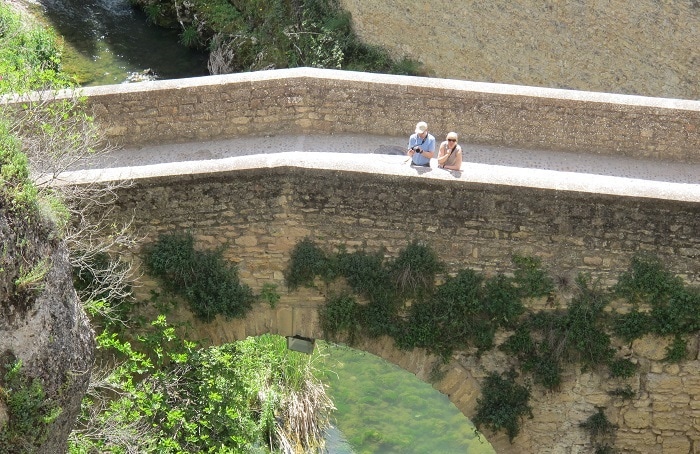
Puente árabe
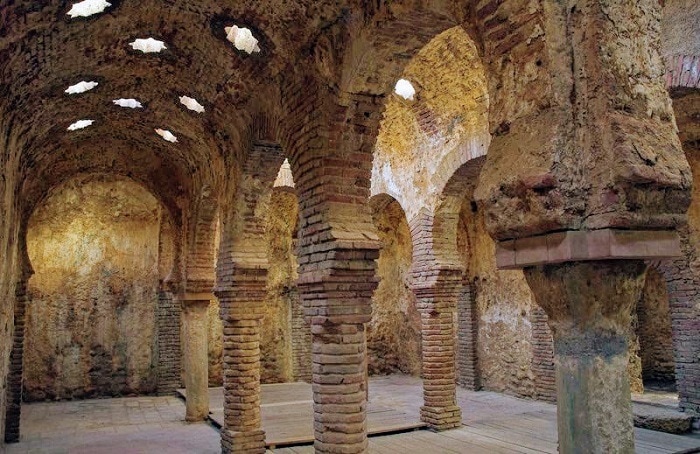
Arab Baths. Source: Junta de Andalucía
Tapas Tour in Ronda.
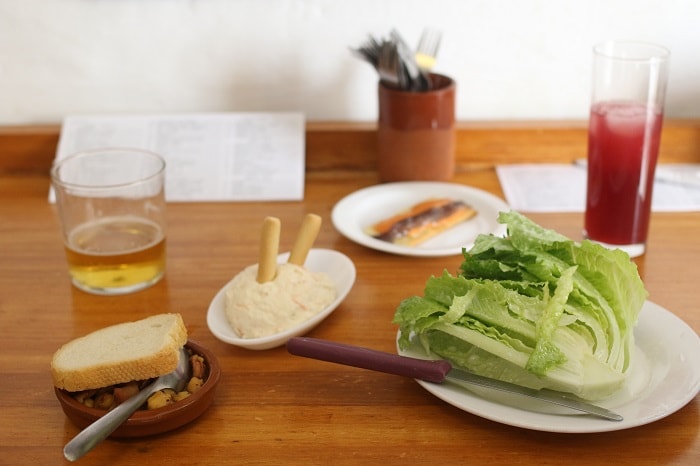
El Lechuguita
The tour can start in a classic Ronda site: El Lechuguita. A traditional bar where they offer about 80 tapas at a price of 80 cents. A historic place where you can get to know the utmost home-made gastronomy of the city.
Nearby is the bar el Coto, with a lot of traditional tapas at 1,2€. There are always local people both inside and at the tables outside.
If we continue a little further, in the pretty El Socorro square, there is a place that we particularly like: La Taberna. They offer a wide variety of tapas and raciones of both meat and fish. When we went there it was full inside, so we sat outside on a typical little folding table on the wall (not quite a table, you can see it better in the photo) and tried several dishes. We especially liked a fried calamari montadito with squid ink black bread and ali oli.
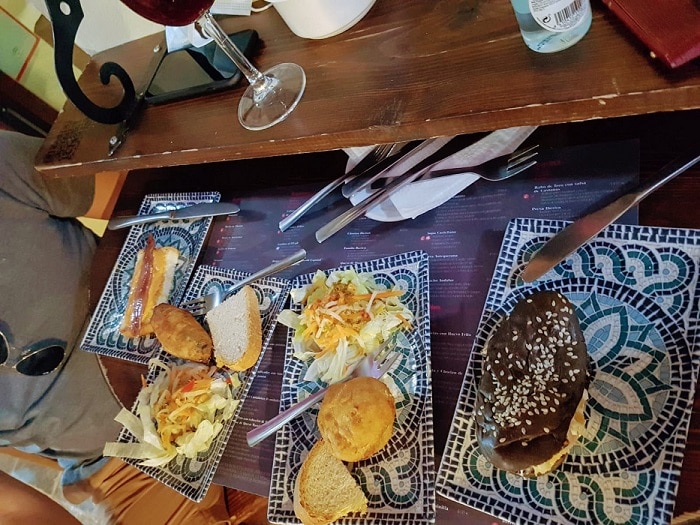
La Taberna, Ronda
The options for tapas in Ronda are almost endless and it is worth going to places like Casa María, De locos tapas, Almocábar or Mesón Sacristán that we usually visit on our gastro-excursion to Ronda.
But undoubtedly, the place to really, properly eat in Ronda is the two Michelin starred Bardal. They offer, as it usually is in these cases, two menus, one short and one long, drinks not included. We went in 2018 (it had one star at the time) and tried the long menu with a bottle of exquisite Sedella white wine. They claim that their menu leaves no doubt that you are eating in Ronda and we couldn’t agree more.
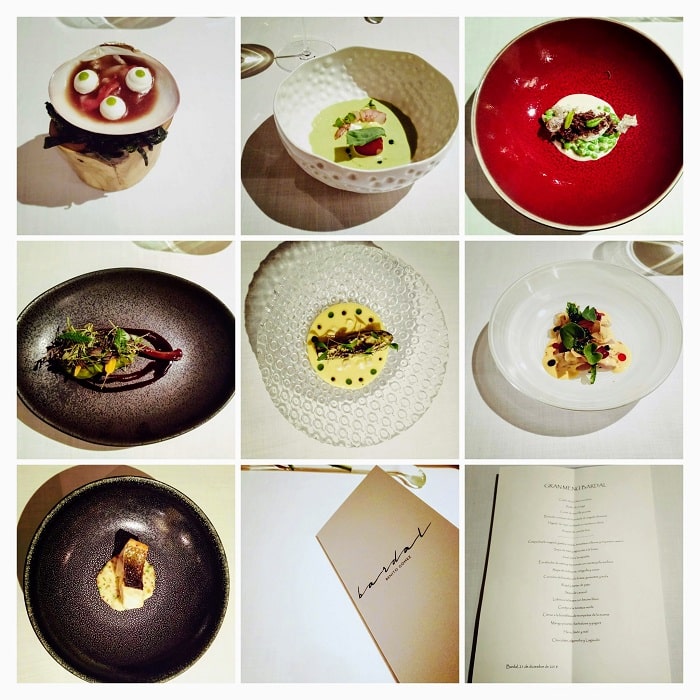
Some of the dishes from the long menu in Bardal (dec. 2018)
A more economical option based on tapas and rations from the same chef responsible for Bardal Benito Gómez, is Tragatá, very close to the Tajo and where you can also eat superbly.
Back in El Socorro Square, you will find the confectionery Las Campanas, where they make the famous Yemas de Ronda, a small sweet made with egg yolk and sugar, simply delicious.
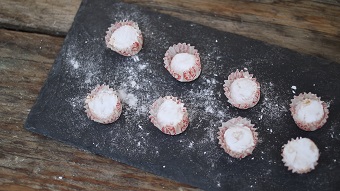
Yemas del Tajo
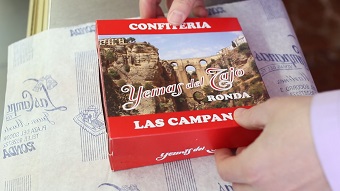
Confitería las Campanas
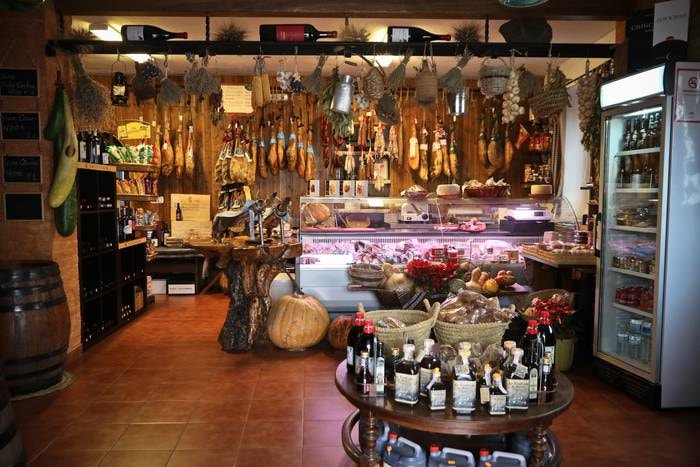
La Trinidad
If you decide to go to the area around the Almocábar gate (we especially recommend De Locos Tapas) you have to visit La Tienda de Trinidad, a traditional grocery store where you can find the best products from the whole region of Ronda: cold meats, Iberian ham, payoya goat cheese (native to the area), vegetables, jams, spices and honey, as well as local wines and craft beers brewed in the city. Everything is at a good price and the quality is exquisite.
An interesting turning point to rest in the hotel or apartment and continue discovering Ronda in the afternoon. After dinner, if you feel like a drink, the terrace above Restaurante Ortega on the corner of El Socorro Square and Carrera Espinel (the popular “la Bola” street) is highly recommended.
RONDA WINERIES
Now that we are filled with energy, visiting some of the wonderful wineries of Ronda could be a great option to spend part of the morning. 22 out of 45 wineries of this municipality have wines with the Designation of Origin Málaga and Málaga Mountain Ranges. Most of these wineries can be visited thanks to the Wine Route (Ruta del vino) and the wineries around Ronda Mountain Range.
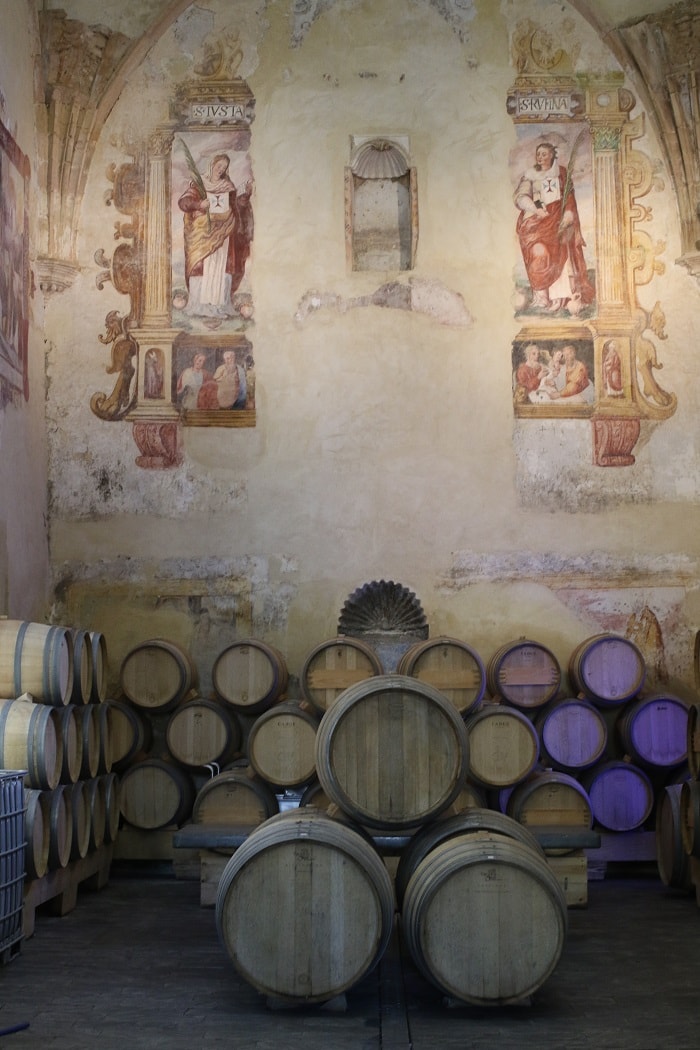
Descalzos viejos winery
A walk around the facilities of the Descalzos Viejos winery is quite interesting. Its barrels are located next to the high altar of an old convent from the 16th century. Also, from its balcony, you have a beautiful view of the Tagus Depression, a wide space where huge vultures fly in circles and vineyards grow. Here is where the wine tasting included in our Ronda Day Trip takes place.
It is also worth visiting the Doña Felisa winery and tasting its famous Chinchilla wines; and so it is a walk around the Excelencia winery. Furthermore, Joaquín Fernández winery does not just offer a route to show its vineyards and how its wines are elaborated, but also has a lovely cottage next to the vineyards where visitors can stay. It is the perfect place for wine and relaxed lovers.
The winey morning reaches its end at the Wine Museum (Museo del Vino), which is managed by La Sangre winery and is located in Ronda’s historical centre (old part centre). It is a place to discover history and the different civilizations that have grown wine in Ronda’s lands.
Next to it, the Bandit’s Museum (Museo del Bandolero) is the perfect place to learn about the duality of these historical characters which are known both because of their violence and their solidarity.
A Lovely Excursion
The whole area of the Ronda mountains and the Genal Valley offers many wonderful hiking trails. Very close to Ronda we have beautiful villages nestled among chestnut trees and waterfalls such as Benaoján, Montejaque, Júzcar, or a little further away, Casares or Genalguacil.
In this case we propose a short route that skirts Ronda without the need to take the car. It is the route of Los Molinos.
Starting from the El Campillo Square, we go down the path of Los Molinos, a paved pedestrian walkway that descends towards the Guadalevín river, surrounded by almond trees. To our right, we will see the New Bridge, as we continue down what is known as the Cachondeo slope due to the zigzagging of the stretch. Here, we can take a path to the right that is quite steep and takes us to the base of the bridge, passing through private land.
Further down we reach a fork where we take the left path that goes under the Puerta del Viento (Wind Gate) and the famous Picha del Moro, a very peculiar rock formation with fossil remains. If you take the path on the right, it leads us to the ancient walls.
We will continue descending, with the Asa de la Caldera (the Cauldron Handle, a rock shaped like a loop due to erosion) already visible in the background until we reach the road to Los Molinos and from there we will have to continue descending to the Guadalevín riverbed. Just before we reach the viewpoint of the Hoya del Tajo from where a small path leads to a hill where everyone takes the typical photo with the bridge behind.
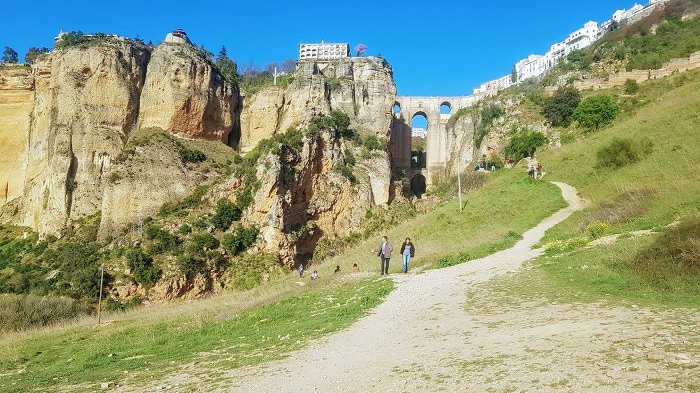
Hoya del Tajo Viewpoint
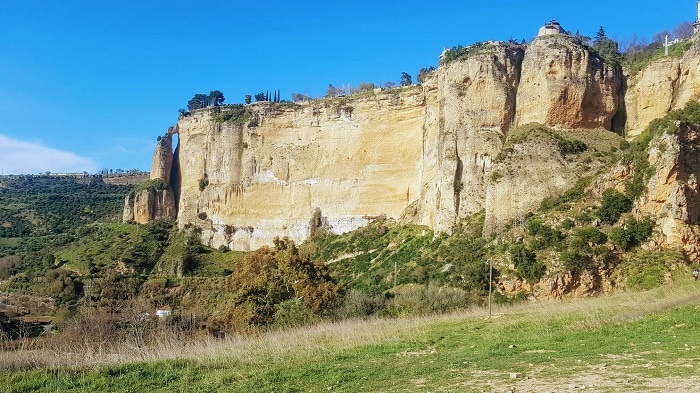
Asa de la caldera
The route runs parallel to the Guadalevín at the height of the Albergue Los Molinos. There are only a few of the 14 Arab mills that were still working until the last century.
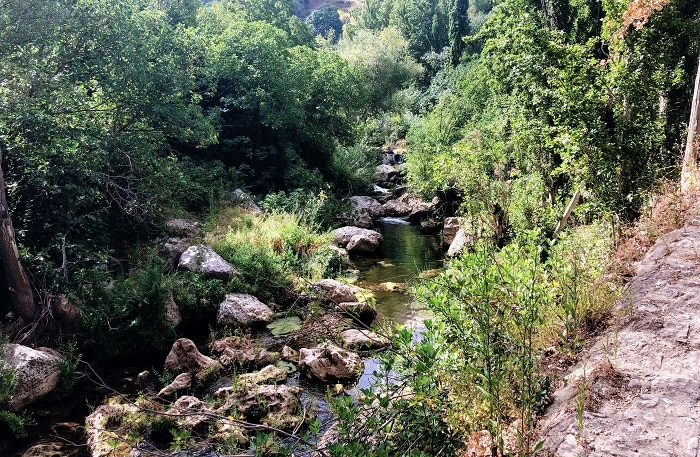
The trail continues next to the hydroelectric plant and parallel to the wall of the Tajo, going under the Asa de la Caldera. You will also see the old Discalced Carmelite monastery where the Descalzos Viejos bodega is today.
The end of the route is in the neighborhood of Doctor Vázquez, where there are some beautiful viewpoints. From there we will only have to continue straight on to reach the Alameda del Tajo and the historic center.
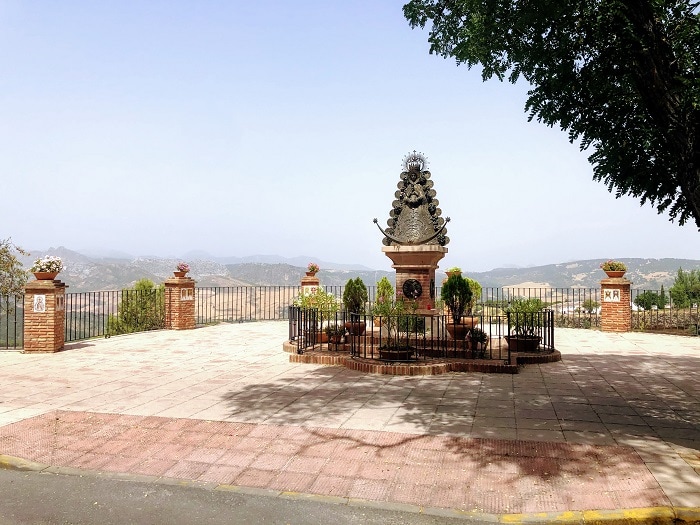
End of the route
Staying in Ronda
Ronda offers multiple accommodation options, from camping to a 5 star hotel. And with the new apartment rental platforms, the offer is even greater.
Here you can see the complete list in booking.
We have tried the Hotel Catalonia , with unbeatable views of the Plaza de Toros. It is not cheap, but from time to time they have very good offers like the one we booked in December.
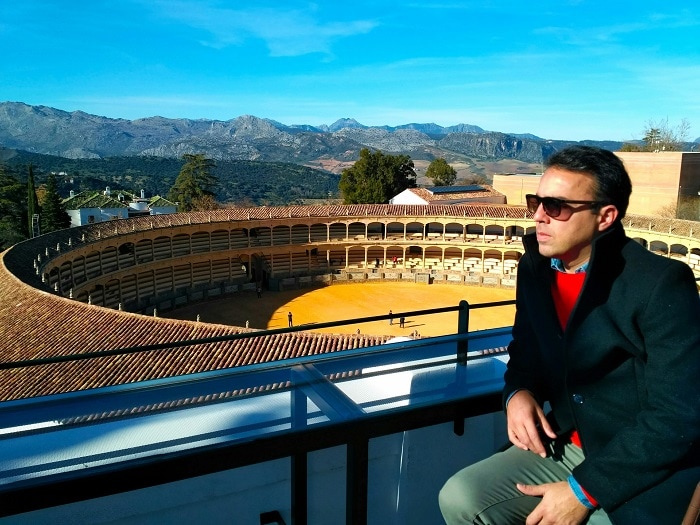
Views from the Hotel
We have also been recently (COVID summer) at the Hotel Don Miguel, one of the oldest that is literally next to the Tajo. The Terrace is also very good for a drink or dinner.
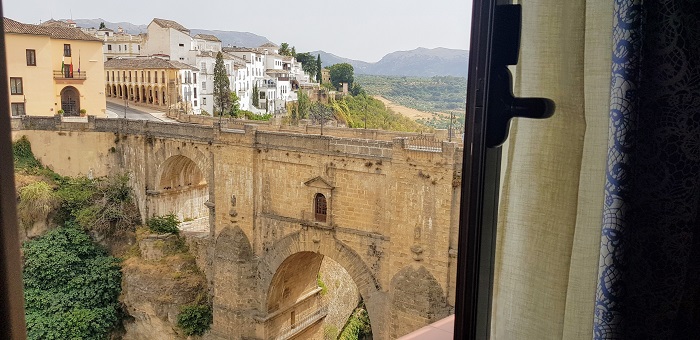
Views from our Room
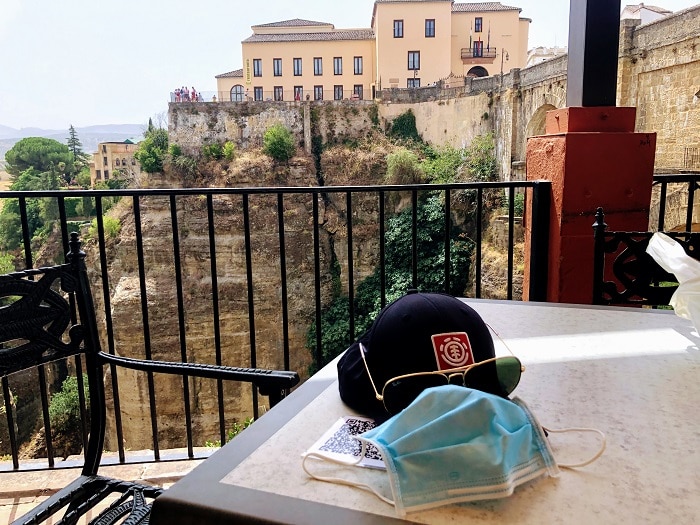
Hotel Don Miguel Terrace
Don’t forget to share this post!
Related Articles
↓
Sign up for our Newsletter and get the inside scoop on our favorite recipes,
exploring and devouring Spain and more.
